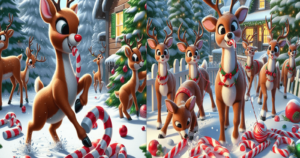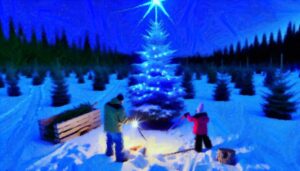Colorado’s winter climate varies significantly depending on the region due to its diverse topography. Temperature Winter temperatures in Colorado can range from cold to very cold, with averages typically between 15°F to 40°F (-9°C to 4°C). Higher elevations experience much colder temperatures.
Winter in Colorado is generally a dry season in terms of liquid precipitation, but snowfall is common, especially in the mountains.

Colorado’s winter climate is influenced by its diverse topography, resulting in a variety of microclimates.
Key points to understand the winter climate and microclimates within the state:
General Winter Climate
1. Elevation: Colorado’s elevation ranges from over 14,000 feet in the Rockies to around 3,300 feet on the plains. Higher elevations tend to be colder and receive more snowfall.
2. Temperature: Winter temperatures can vary significantly. Mountain areas can experience sub-zero temperatures, while lower elevations, like the Front Range, often have milder winters with occasional cold snaps.
3. Snowfall: The state is known for its heavy snowfall, particularly in the mountains. Ski resorts in areas like Aspen, Vail, and Breckenridge benefit from substantial snow accumulations.


- Mountain Regions:
- Rocky Mountains: High elevations with significant snowfall and cold temperatures. Areas can experience heavy snowfalls, sometimes exceeding 300 inches annually.
- San Juan Mountains: Known for heavy snow and frequent winter storms, this area can also have variable conditions with both heavy snow and sunny periods.
2. Front Range Urban Corridor:
- Denver Metro Area: Experiences relatively mild winters compared to the mountains. Snowfall is lighter, and temperatures are more moderate, but occasional snowstorms can impact the area.
- Boulder and Fort Collins: Similar to Denver but can experience slightly different weather patterns due to proximity to foothills.
3. Western Slope:
- Grand Junction: Known for milder winters with less snowfall. This area is in a rain shadow, receiving less precipitation overall.
- Glenwood Springs: More snow than Grand Junction but still less than higher mountain areas.
4. Eastern Plains:
- High Plains: Characterized by cold winters with less snow than mountainous regions. Winds can create blizzard conditions even with moderate snowfall.
5. Southern Colorado:
- San Luis Valley: Cold and dry with less snowfall compared to mountain regions. The valley is surrounded by mountains, creating a unique microclimate.
- Pueblo: Warmer and drier winters compared to other parts of the state, with less snowfall.
Influencing Factors
- Topography: Mountains, valleys, and plains create varied weather patterns and microclimates.
- Proximity to Mountain Ranges: Areas closer to mountain ranges often experience more significant snowfall and colder temperatures.
- Weather Systems: Colorado is affected by weather systems coming from the Pacific Northwest, the Gulf of Mexico, and the Arctic, leading to diverse weather patterns.
Understanding these microclimates helps in planning activities such as skiing, agriculture, and urban planning, as well as in anticipating weather-related challenges.

Regional Differences in climate in Colorado winter
Front Range Urban Corridor (Denver, Boulder, Fort Collins):
Temperature: Daytime highs can be mild, often in the 30s to 50s°F (0°C to 10°C), but nights can be much colder, often dropping below freezing.
Snowfall: Periodic snowstorms can bring significant accumulations, but snow usually melts quickly due to sunny days.
Climate: Relatively dry with low humidity
Mountain Regions (Aspen, Vail, Breckenridge)

Temperature: Much colder, with highs often below freezing and lows well below 0°F (-18°C).
Snowfall: Heavy snowfall is common, contributing to excellent conditions for skiing and other winter sports.
Climate: High altitude means thinner air and significant temperature swings between day and night.
Western Slope (Grand Junction, Montrose):
Temperature: Milder than the mountains but can still be quite cold.
Snowfall: Less snowfall compared to the mountains but can still experience significant snow events.
Climate: Generally dry with more sunny days.
Eastern Plains:
- Temperature: Similar to the Front Range but can experience more extreme cold and wind chill.
- Snowfall: Snowfall can be less frequent but blizzards are possible.
- Climate: Drier and windier compared to the Front Range.
Choosing the Right Plants to grow in Colorado during winter

Winter gardening in Colorado can be challenging due to the cold temperatures and short days. However, with the right preparation and plant selection, you can enjoy fresh produce even in the colder months. Here are some tips for choosing cold-hardy vegetables and herbs suitable for winter gardening in Colorado:

1. Kale: One of the hardiest greens, kale can withstand frost and even become sweeter after exposure to cold weather.

2. Spinach: Another frost-tolerant green, spinach grows well in cooler temperatures and can be harvested throughout the winter.

https://abavistwellness.com/spinach-vs-collard-green/
3. Brussels Sprouts: These can handle the cold well and actually improve in flavor after a frost.
4. Carrots: Carrots can be left in the ground and harvested as needed, as they can survive cold temperatures if mulched properly.

5. Beets: With proper mulching, beets can be harvested through the winter

6. Garlic: Planting garlic in the fall allows it to establish roots before winter, with harvest in late spring or early summer.
7. Turnips: These root vegetables are cold-tolerant and can be harvested throughout the winter.
8. Leeks: Leeks are hardy and can be harvested as needed through the winter months.

9. Rutabaga: This root vegetable is similar to turnips and can withstand cold temperatures.

1. Thyme: A perennial herb that can survive winter temperatures, especially with some protection like mulch.
2. Sage: Another hardy perennial herb that can survive cold weather with some winter protection.
3. Oregano: Can withstand light frosts and can be mulched for added protection in colder climates.
4. Parsley: While it may not survive the entire winter without protection, parsley can withstand light frosts and can be extended with row covers or cold frames
5. Chives: These can survive winter if given some protection and often come back in the spring.
6. Mint: Hardy and can survive winter, though it’s best grown in containers to control its spread.
Recommended Perennials & Annuals for Winter Gardening in Colorado:
Perennials
Advantages of Perennials:
- Come back year after year, reducing the need for replanting.
- Often hardier and more adapted to local climate conditions.
- Provide long-term structure and consistency in your garden.
- Evergreen Shrubs:
- Juniper: Hardy and low-maintenance, provides greenery year-round.
- Holly: Adds color with its red berries and glossy green leaves.
2. Ornamental Grasses:
- Feather Reed Grass (Calamagrostis acutiflora): Tall and feathery, adds texture to the winter landscape.
- Blue Fescue (Festuca glauca): Compact and colorful, stays vibrant through winter.
3. Winter Blooming Perennials:
- Hellebores (Helleborus spp.): Also known as Christmas roses, they bloom in late winter to early spring.
- Winter Jasmine (Jasminum nudiflorum): Bright yellow flowers appear on bare stems in winter.
4. Ground Covers:
- Creeping Thyme (Thymus serpyllum): Stays green through winter and can tolerate some snow cover.
- Vinca (Vinca minor): Evergreen ground cover with blue or purple flowers in early spring.
Annuals Plants
Advantages of Annuals:
- Provide a burst of color and variety each year.
- Can be tailored to the specific season, ensuring your garden looks fresh.
- Allow for experimentation with different plants and designs
Winter gardening in Colorado requires careful selection of plants that can withstand the cold temperatures and occasional snow. Here’s a guide on choosing the right perennials and annuals for your winter garden in Colorado:
Perennials
Advantages of Perennials:
- Come back year after year, reducing the need for replanting.
- Often hardier and more adapted to local climate conditions.
- Provide long-term structure and consistency in your garden.
Recommended Perennials for Winter Gardening in Colorado:
- Evergreen Shrubs:
- Juniper: Hardy and low-maintenance, provides greenery year-round.
- Holly: Adds color with its red berries and glossy green leaves.
- Ornamental Grasses:
- Feather Reed Grass (Calamagrostis acutiflora): Tall and feathery, adds texture to the winter landscape.
- Blue Fescue (Festuca glauca): Compact and colorful, stays vibrant through winter.
- Winter Blooming Perennials:
- Hellebores (Helleborus spp.): Also known as Christmas roses, they bloom in late winter to early spring.
- Winter Jasmine (Jasminum nudiflorum): Bright yellow flowers appear on bare stems in winter.
- Ground Covers:
- Creeping Thyme (Thymus serpyllum): Stays green through winter and can tolerate some snow cover.
- Vinca (Vinca minor): Evergreen ground cover with blue or purple flowers in early spring.
Annuals
Advantages of Annuals:
- Provide a burst of color and variety each year.
- Can be tailored to the specific season, ensuring your garden looks fresh.
- Allow for experimentation with different plants and designs.
- Cool-Season Annuals:
- Pansies (Viola tricolor var. hortensis): Hardy and colorful, can survive light frost and snow.
- Snapdragons (Antirrhinum majus): Tolerant of cooler temperatures, adding vertical interest.
2. Frost-Tolerant Vegetables:
- Kale: Not only edible but also ornamental, with its ruffled leaves providing texture.
- Swiss Chard: Bright stems and leafy greens that can survive light frost.
3. Winter-Sown Annuals:
- Calendula (Calendula officinalis): Can be sown in late fall for early spring blooms.
- Sweet Alyssum (Lobularia maritima): Hardy and fragrant, can survive mild winter conditions.
Colorado Native Plants and their benefits
Utilizing native plants can offer numerous benefits, including increased resilience to local conditions, reduced water usage, and support for local wildlife.
Native Plants for Winter Gardening
- Evergreens:
- Pinyon Pine (Pinus edulis): A drought-tolerant evergreen that provides year-round color and wildlife habitat.
- Rocky Mountain Juniper (Juniperus scopulorum): Known for its hardiness and ability to thrive in poor soils.
- Grasses:
- Blue Grama (Bouteloua gracilis): A hardy grass that remains attractive through the winter, providing texture to the garden.
- Little Bluestem (Schizachyrium scoparium): Offers beautiful winter interest with its reddish-bronze foliage.

3. Perennials:
- Pasque Flower (Pulsatilla patens): One of the first flowers to bloom in spring, often emerging while snow is still on the ground.
- Golden Banner (Thermopsis divaricarpa): A tough perennial that provides early spring color and can withstand cold temperatures.

4. Shrubs:
- Mountain Mahogany (Cercocarpus montanus): A versatile shrub that offers winter interest with its evergreen foliage and distinctive seed pods.
- Rabbitbrush (Ericameria nauseosa): Provides late fall color and remains attractive through winter.
5. Groundcovers:
- Kinnikinnick (Arctostaphylos uva-ursi): An evergreen groundcover that provides year-round greenery and is drought-tolerant.
- Creeping Mahonia (Mahonia repens): Offers evergreen foliage and bright yellow flowers in early spring.
Best Spruce and Pine trees to grow in the winter in Colorado
Spruce Trees:
- Colorado Blue Spruce (Picea pungens):
- Known for its striking blue-gray needles and conical shape.
- Very hardy and well-suited to Colorado’s climate.
- Can withstand cold temperatures and various soil types.
- Norway Spruce (Picea abies):
- Fast-growing and hardy.
- Adaptable to a range of soil conditions.
- Provides good windbreaks and privacy screens.
- Engelmann Spruce (Picea engelmannii):
- Native to the Rocky Mountains, making it a great choice for Colorado.
- Tolerates cold and high altitudes well.
- Known for its dense foliage and strong wood.
Pine Trees:
- Ponderosa Pine (Pinus ponderosa):
- One of the most common and resilient pine species in Colorado.
- Tolerates drought and poor soil conditions.
- Has a long lifespan and can grow very tall.
- Austrian Pine (Pinus nigra):
- Known for its durability and resistance to harsh conditions.
- Has dark green needles and a dense growth habit.
- Good for windbreaks and ornamental planting.
- Bristlecone Pine (Pinus aristata):
- Extremely hardy and long-lived, often found at high elevations.
- Slow-growing but highly resilient to harsh winter conditions.
- Unique appearance with short needles and bristle-like cones.
- Limber Pine (Pinus flexilis):
- Flexible branches that can withstand heavy snow loads.
- Hardy and adaptable to high-altitude and rocky soils.
- Provides excellent wildlife habitat.
These species are well-suited to the winter conditions in Colorado, providing resilience and aesthetic appeal throughout the year.
Soil Preparation for winter gardening in Colorado
Winter gardening in Colorado requires special attention to soil preparation due to the harsh weather conditions. Here’s a guide on soil amendments, mulching, and composting during winter:
Soil Amendments
- Organic Matter:
- Compost: Add a layer of compost to your soil in the fall. This helps improve soil structure, provides nutrients, and enhances microbial activity.
- Manure: Well-rotted manure can be incorporated into the soil. Avoid using fresh manure as it can burn plants and may contain pathogens.
- Cover Crops:
- Plant cover crops like winter rye, clover, or vetch. These crops protect the soil, prevent erosion, and can be turned into the soil in spring to add organic matter.
- Lime and Sulfur:
- Test your soil pH. If your soil is too acidic, add lime. If it’s too alkaline, add sulfur. Fall is a good time for these amendments as they take time to adjust soil pH.
- Minerals:
- Add rock phosphate or greensand for slow-release phosphorus and potassium, which are essential for root development and overall plant health.
Mulching
- Benefits:
- Mulching helps insulate the soil, prevents erosion, retains moisture, and suppresses weeds.
- Materials:
- Use organic materials like straw, hay, leaves, or wood chips. These materials break down over time and add organic matter to the soil.
- Application:
- Apply a thick layer (2-4 inches) of mulch after the ground has frozen to prevent freeze-thaw cycles that can damage plant roots.
Composting in Winter
- Compost Pile Maintenance:
- Continue to add kitchen scraps and yard waste to your compost pile. Turn the pile occasionally to aerate it.
- Insulate the compost pile with straw bales or a tarp to retain heat and keep the microbial activity going.
- Indoor Composting:
- Consider using a compost tumbler or an indoor worm bin (vermicomposting) during winter months. These methods can keep composting active even in colder temperatures.
- Layering:
- Alternate layers of green (nitrogen-rich) and brown (carbon-rich) materials. Green materials include vegetable scraps and coffee grounds, while brown materials include leaves and cardboard.
- Moisture:
- Ensure the compost remains moist but not soggy. If it dries out, microbial activity will slow down, and if it’s too wet, it can become anaerobic and smell bad.
Additional Tips
- Soil Testing: Conduct a soil test in the fall to understand nutrient levels and pH. This will guide you in making the right amendments.
- Clean-Up: Remove any dead plants and debris from the garden to prevent pests and diseases from overwintering.
- Planning: Plan your winter garden layout and select cold-hardy crops that can withstand Colorado’s winter conditions, such as kale, spinach, and garlic.
Season Extension Techniques: for Year-Round Gardening in Colorado
Cold Frames and Cloches
- Cold Frames: These are bottomless boxes with a transparent top, usually made of glass or plastic, that trap heat from the sun and protect plants from frost. You can build them from materials like wood or bricks and old windows or clear plastic.
- Usage Tips: Place your cold frame in a sunny location, and open the top on warmer days to prevent overheating. Close it at night to retain heat.
- Cloches: These are small, portable covers that protect individual plants. They can be made from glass, plastic, or even cut-down plastic bottles.
- Usage Tips: Place cloches over plants to shield them from cold winds and frost. Ensure adequate ventilation to prevent mold growth.
Hoop Houses and Greenhouses
- Hoop Houses: These are tunnel-like structures made from flexible plastic or metal hoops covered with greenhouse plastic. They create a microclimate that can be several degrees warmer than the outside temperature.
- Usage Tips: Anchor the plastic securely to prevent wind damage. Ventilate on sunny days to prevent overheating.
- Greenhouses: More permanent structures with solid frames and coverings made of glass or durable plastic. They provide a controlled environment for growing plants year-round.
- Usage Tips: Use heaters or thermal mass (like water barrels) to maintain temperature. Install fans or vents for proper air circulation.
Hoop Houses and Greenhouses
- Hoop Houses: These are tunnel-like structures made from flexible plastic or metal hoops covered with greenhouse plastic. They create a microclimate that can be several degrees warmer than the outside temperature.
- Usage Tips: Anchor the plastic securely to prevent wind damage. Ventilate on sunny days to prevent overheating.
- Greenhouses: More permanent structures with solid frames and coverings made of glass or durable plastic. They provide a controlled environment for growing plants year-round.
- Usage Tips: Use heaters or thermal mass (like water barrels) to maintain temperature. Install fans or vents for proper air circulation.
Tips for Winter Gardening
- Mulching: Applying a thick layer of mulch can help insulate the soil and protect plant roots from freezing temperatures and conserve moisture.

- Row Covers: Using row covers or frost blankets can help protect plants from the cold and extend the growing season.

- Cold Frames: Building or purchasing a cold frame can provide a controlled environment for winter gardening, protecting plants from extreme temperatures.
- Greenhouses: A small greenhouse or hoop house can significantly extend the growing season and protect plants from harsh winter conditions.

- Succession Planting: Planting in succession can help ensure a continuous harvest of fresh produce throughout the winter.
- Watering: Water plants well before the ground freezes to ensure they have adequate moisture through winter. Avoid watering during freezing temperatures.

- Wind Protection: Use windbreaks or burlap wraps around delicate plants to shield them from harsh winter winds.

- Planting Time: Plant native species in the fall to give them time to establish roots before winter.
- Microclimates: Take advantage of microclimates in your garden, such as areas near buildings or walls that retain heat, to plant less hardy varieties.
- Soil Preparation: Ensure good drainage to prevent root rot and other moisture-related issues.
Watering Strategies in winter to Prevent Root freeze
Winter Watering Needs and Schedules
- Watering Frequency:
- Water trees, shrubs, perennials, and lawns during extended dry periods when there has been little or no snow cover for four to six weeks.
- Generally, watering once a month is sufficient, but this can vary depending on the specific weather conditions and the type of plants.
2. Timing:
- Water during the warmer parts of the day, usually between 10 AM and 2 PM, when temperatures are above 40°F. This helps prevent the water from freezing on the ground surface.
- Ensure the soil is not frozen before watering, as water needs to penetrate to the roots.
3. Amount:
- Apply water slowly so it can soak into the soil rather than run off. Deep watering is essential to reach the root zone.
- For trees, apply 10 gallons of water for each inch of tree diameter. Shrubs and perennials need proportionately less.
4. Mulching:
- Apply mulch around the base of plants to help retain moisture and insulate roots. Use organic mulch like wood chips or straw, but avoid piling it directly against plant stems.
Preventing Root Freeze
- Soil Moisture:
- Keep the soil slightly moist throughout the winter to insulate the roots. Dry soil can freeze more quickly and deeply than moist soil.
- Avoid overwatering, as excessively wet soil can lead to root rot and other issues.
- Mulching:
- As mentioned, mulch acts as an insulator, protecting roots from temperature fluctuations. Apply a 3-4 inch layer around the base of plants, extending out to the drip line.
- Wind Protection:
- Use burlap screens or windbreaks to protect plants from drying winds, which can desiccate both soil and plant tissues.
- Choosing Hardy Plants:
- Select plant species that are well-suited to Colorado’s climate and winter conditions. Native and cold-hardy plants are more likely to withstand winter stresses.
- Monitoring:
- Regularly check the moisture level in the soil and the condition of your plants. Adjust watering practices based on weather conditions and plant needs.
Additional Tips
- Irrigation Systems:
- Winterize your irrigation system to prevent damage from freezing. Use hoses and buckets for manual watering during the winter months.
- Avoid Watering During Freezing Weather:
- Do not water when temperatures are expected to drop below freezing within 24 hours to prevent ice formation on plants and walkways.
Common winter pests and Disease: Types Management
Common Winter Pests
- Aphids:
- Description: Small, soft-bodied insects that feed on plant sap.
- Management:
- Inspect plants regularly and remove aphids by hand or with a strong stream of water.
- Use insecticidal soap or horticultural oils if infestations are severe.
- Encourage natural predators like ladybugs and lacewings.
- Spider Mites:
- Description: Tiny mites that create fine webbing and feed on plant cells, causing stippling and yellowing of leaves.
- Management:
- Increase humidity around plants, as spider mites thrive in dry conditions.
- Use a strong water spray to knock mites off plants.
- Apply horticultural oils or insecticidal soaps to affected areas.
- Scale Insects:
- Description: Small, immobile insects that attach to stems and leaves, sucking plant sap.
- Management:
- Scrape off scale insects with a soft brush or cloth.
- Use horticultural oils to smother and kill scale insects.
- Prune heavily infested branches to prevent spread.
- Rodents (e.g., voles, mice):
- Description: Small mammals that can girdle trees and shrubs by chewing on bark.
- Management:
- Use physical barriers like tree wraps or hardware cloth to protect trunks.
- Keep areas around plants free of debris and tall grass, which can provide shelter for rodents.
- Use traps or bait stations if necessary, following safety guidelines to avoid harming pets and wildlife.
Common Winter Diseases
- Root Rot:
- Description: Caused by various fungi, root rot leads to decayed roots and weakened plants.
- Management:
- Ensure proper drainage to prevent waterlogging.
- Avoid overwatering, especially in cold weather.
- Use fungicide treatments if necessary, following label instructions.
- Canker Diseases:
- Description: Fungal infections that cause sunken, dead areas on branches and trunks.
- Management:
- Prune out infected branches during dry weather to prevent spread.
- Disinfect pruning tools between cuts with a bleach solution.
- Improve plant vigor through proper watering, mulching, and fertilization.
- Powdery Mildew:
- Description: Fungal disease that produces a white, powdery coating on leaves and stems.
- Management:
- Prune affected areas to improve air circulation.
- Apply fungicides labeled for powdery mildew if the infestation is severe.
- Avoid overhead watering to reduce humidity around plants.
- Black Spot:
- Description: Fungal disease causing black spots on leaves, commonly affecting roses.
- Management:
- Remove and dispose of infected leaves to reduce spore spread.
- Apply fungicides during dormant periods to protect new growth.
- Ensure good air circulation around plants.
General Management Tips
- Sanitation:
- Keep garden areas clean and free of fallen leaves, debris, and plant material that can harbor pests and diseases.
- Remove and destroy any diseased plant material promptly.
- Monitoring:
- Regularly inspect plants for signs of pests and diseases, especially during warm spells in winter.
- Cultural Practices:
- Maintain healthy plants through proper watering, mulching, and fertilization to improve their resistance to pests and diseases.
- Choose resistant plant varieties whenever possible.
Organic pest control methods
Biological Control
- Beneficial Insects:
- Ladybugs: Feed on aphids, mites, and other small insects.
- Lacewings: Consume aphids, caterpillars, and other soft-bodied pests.
- Parasitic Wasps: Lay eggs in or on pest insects, eventually killing them.
- Predatory Nematodes:
- These microscopic worms can control soil-dwelling pests like grubs, root maggots, and cutworms.
Cultural Control
- Crop Rotation:
- Rotating crops each season prevents pests from establishing themselves in a specific area.
- Companion Planting:
- Planting certain plants together can repel pests or attract beneficial insects. For example, marigolds can repel nematodes, and basil can deter mosquitoes.
- Mulching:
- Organic mulches, like straw or wood chips, can suppress weed growth and provide habitat for beneficial insects.
- Proper Watering:
- Overwatering or underwatering can stress plants and make them more susceptible to pests. Water plants early in the day to reduce humidity and prevent fungal diseases.
Mechanical and Physical Control
- Handpicking:
- Manually removing pests like caterpillars, beetles, and slugs from plants.
- Barriers and Traps:
- Row Covers: Lightweight fabric that protects plants from insects.
- Sticky Traps: Sticky surfaces that capture flying insects.
- Beer Traps: Bowls of beer that attract and drown slugs.
- Pruning:
- Removing infested plant parts to prevent the spread of pests and diseases.
Organic Sprays and Treatments
- Neem Oil:
- Derived from the neem tree, this oil disrupts the life cycle of many pests, including aphids, whiteflies, and spider mites.
- Insecticidal Soap:
- Effective against soft-bodied insects like aphids and mites. It works by disrupting their cell membranes.
- Diatomaceous Earth:
- A powder made from fossilized diatoms. It is abrasive to insects and can be used to control ants, slugs, and other crawling pests.
- Garlic Spray:
- A homemade spray made from garlic cloves, water, and a small amount of soap can repel insects like aphids and whiteflies.
- Bacillus thuringiensis (Bt):
- A naturally occurring bacterium that targets specific insect larvae, such as caterpillars and mosquito larvae.
Environmental Control
- Encouraging Natural Predators:
- Creating a habitat that attracts birds, frogs, and other predators can help control pest populations.
- Maintaining Plant Health:
- Healthy plants are more resistant to pests and diseases. Ensure plants receive the right amount of sunlight, water, and nutrients.
Integrated Pest Management (IPM)
- Regular Monitoring:
- Keep an eye on pest levels and plant health regularly to catch problems early.
- Threshold Levels:
- Determine acceptable pest levels before taking action. Not all pests need to be eradicated completely.
- Combining Methods:
- Use a combination of the above methods for a comprehensive approach to pest management.
Maintenance and Care: Winter Pruning, Trimming, and Fertilization
Pruning and Trimming for Winter Health
- Timing:
- Late Fall to Early Winter: The best time to prune most plants is when they are dormant, typically from late fall to early winter. This helps prevent disease and encourages robust growth in the spring.
- Avoid Late Winter: Pruning too close to spring can cause plants to bleed sap, weakening them.
- Tools:
- Use sharp, clean tools to make precise cuts and reduce the risk of disease.
- Sterilize tools between plants to prevent the spread of pathogens.
- Techniques:
- Remove Dead or Diseased Wood: Cut out any dead, diseased, or damaged branches to prevent disease spread.
- Thin Out Crowded Branches: Improve air circulation by thinning out branches that are too close together. This reduces the risk of fungal infections.
- Shape and Size Control: Trim back overgrown branches to maintain the plant’s desired shape and size. Avoid excessive cutting, which can stress the plant.
- Proper Cuts: Make cuts just above a bud or branch junction to encourage healthy growth. Avoid leaving stubs.
- Specific Plants:
- Trees: Focus on removing crossing branches and those growing towards the center of the tree.
- Shrubs: Prune flowering shrubs based on their bloom time. Prune spring-flowering shrubs after they bloom; prune summer-flowering shrubs in late winter.
- Perennials: Cut back dead foliage to a few inches above the ground to prepare for new growth in spring.
Winter-Specific Fertilization Tips
- Soil Testing:
- Conduct a soil test to determine nutrient levels and pH. This helps tailor fertilization to your garden’s specific needs.
- Types of Fertilizers:
- Slow-Release Fertilizers: Apply slow-release fertilizers in late fall to provide a steady supply of nutrients through the winter.
- Organic Mulch: Use organic mulch like compost, leaf mold, or well-rotted manure. Mulch insulates roots and adds nutrients to the soil as it decomposes.
- Application:
- Avoid Over-Fertilizing: Excessive fertilization can lead to nutrient runoff and plant stress. Follow recommendations based on your soil test results.
- Root Zone Application: Apply fertilizers to the root zone, avoiding direct contact with stems and trunks to prevent burning.
- Watering:
- Water plants well before the ground freezes to ensure they have enough moisture through the winter. Moist soil absorbs and retains heat better than dry soil, protecting roots from extreme cold.
- Plant-Specific Needs:
- Evergreens: Use a balanced, slow-release fertilizer formulated for evergreens.
- Lawns: Apply a high-potassium winterizer fertilizer to lawns in late fall to strengthen grass for winter.
Additional Tips
- Protecting Plants: Use burlap wraps, cloches, or other protective covers for sensitive plants to shield them from harsh winter conditions.
- Monitoring: Regularly check plants for signs of stress or damage throughout the winter and address issues promptly.
Resources
https://conps.org/wp-content/uploads/2015/05/Suggested-Native-Plants_0408.pdf
https://www.ams.usda.gov/sites/default/files/media/Organic%20Pest%20Management_FINAL.pdf













